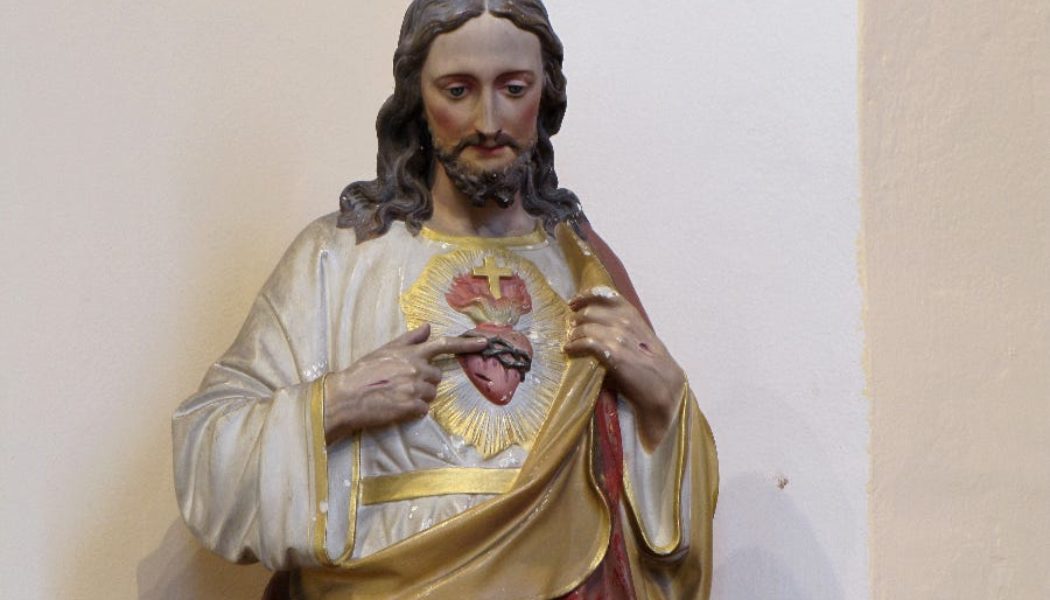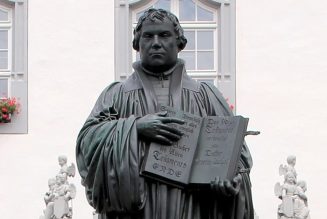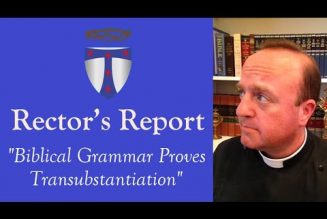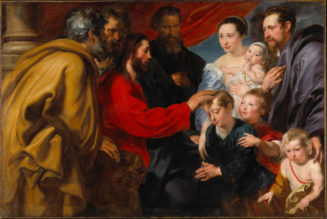Pope Francis published the fourth encyclical of his so far 11-year pontificate Thursday.
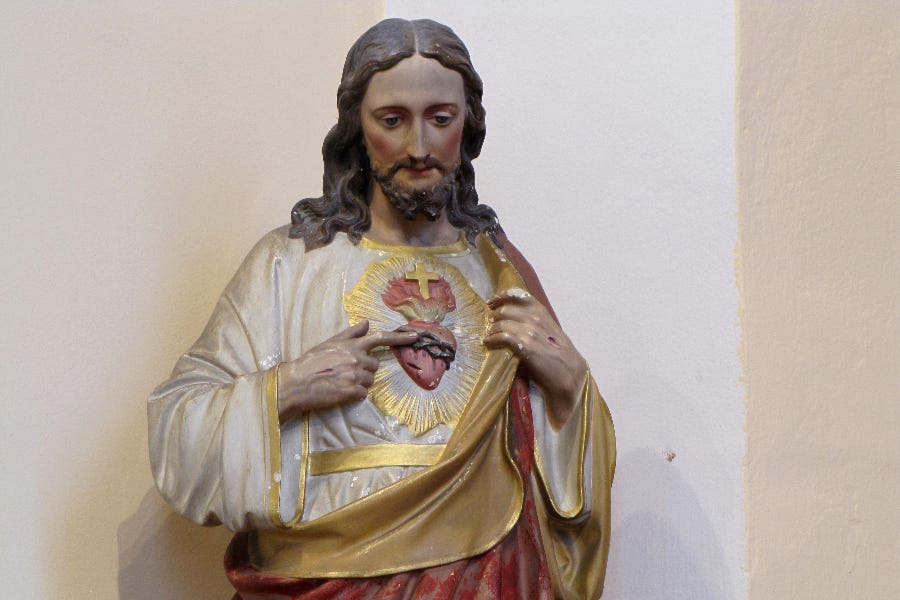
The 141-page, 28,000-word Dilexit nos (“He loved us”) follows 2013’s Lumen fidei (co-written with Benedict XVI), 2015’s Laudato si’, and 2020’s Fratelli tutti.
The new encyclical’s incipit, or opening phrase, is drawn from Romans 8:37, in which St. Paul says Christians can overcome every adversity “through him who loved us.”
What’s the genesis of the new encyclical, dedicated to “the human and divine love of the Heart of Jesus Christ”? And what does it say?
Here’s a brief guide for busy readers.
What’s the background?
Pope Francis revealed in June, the month traditionally dedicated to the Sacred Heart, that he planned to write a document on the devotion that swept the Catholic world after the French nun Margaret Mary Alacoque reported visions of Jesus between Dec. 27, 1673, and June 1675.
Alacoque, who lived at the Visitation convent in Paray-le-Monial, eastern France, said she heard Christ telling her that he wanted her to spread his heart’s “burning charity” to the ends of the Earth.
At a June 5 general audience, the pope noted that the 350th anniversary of Alacoque’s first vision fell in December 2023.
“That occasion marked the beginning of a period of celebrations that will end on June 27 next year,” he said. “This is why I am pleased to prepare a document that brings together the precious reflections of previous Magisterial texts and a long history that goes back to the Sacred Scriptures, in order to re-propose today, to the whole Church, this devotion imbued with spiritual beauty.”
“I believe it will do us great good to meditate on various aspects of the Lord’s love, which can illuminate the path of ecclesial renewal, and say something meaningful to a world that seems to have lost its heart.”
“I ask you to accompany me with prayer, during this time of preparation, with the intention of making this document public next September.”
The Vatican has given no reason for the text’s failure to materialize in September, but the pope’s hectic travel schedule that month might explain the delay.
On Oct. 21, the Holy See press office announced that the document — billed for the first time as an encyclical — would be released at an Oct. 24 press conference with two speakers: the Italian theologian Archbishop Bruno Forte and Sr. Antonella Fraccaro, leader of the Disciples of the Gospel, an Italian institute of consecrated life inspired by the spirituality of St. Charles de Foucauld.
In his June announcement, the pope outlined the document’s basic structure, beginning with references to Christ’s heart in the Bible, reviewing past papal statements on the Sacred Heart, and “re-proposing” the devotion to 21st-century humanity.
What “previous Magisterial texts” was Pope Francis referring to? There are several touching on the Sacred Heart:
-
Leo XIII’s 1899 encyclical Annum sacrum.
-
Pius XI’s 1928 encyclical Miserentissimus Redemptor and 1932 encyclical Caritate Christi compulsi.
-
Pius XII’s 1956 encyclical Haurietis aquas.
-
John Paul II’s 1999 letter on the 100th anniversary of Annum sacrum.
-
Benedict XVI’s 2006 letter marking the 50th anniversary of Haurietis aquas.
The first footnote in Dilexit nos acknowledges another source of inspiration: the Argentine Jesuit Fr. Diego Fares, who died in 2022 at the age of 66. Pope Francis says that Fares’ unpublished writings prompted “many of the reflections” in the encyclical’s opening chapter, on “the importance of the heart.”
In Dilexit nos, Pope Francis seems to be adding a Christological coda to his social encyclicals Laudato si’ and Fratelli tutti, which some criticized for what they perceived as a lack of focus on Christ.
“The present document can help us see that the teaching of the social encyclicals Laudato si’ and Fratelli tutti is not unrelated to our encounter with the love of Jesus Christ,” the pope writes.
“For it is by drinking of that same love that we become capable of forging bonds of fraternity, of recognizing the dignity of each human being, and of working together to care for our common home.”
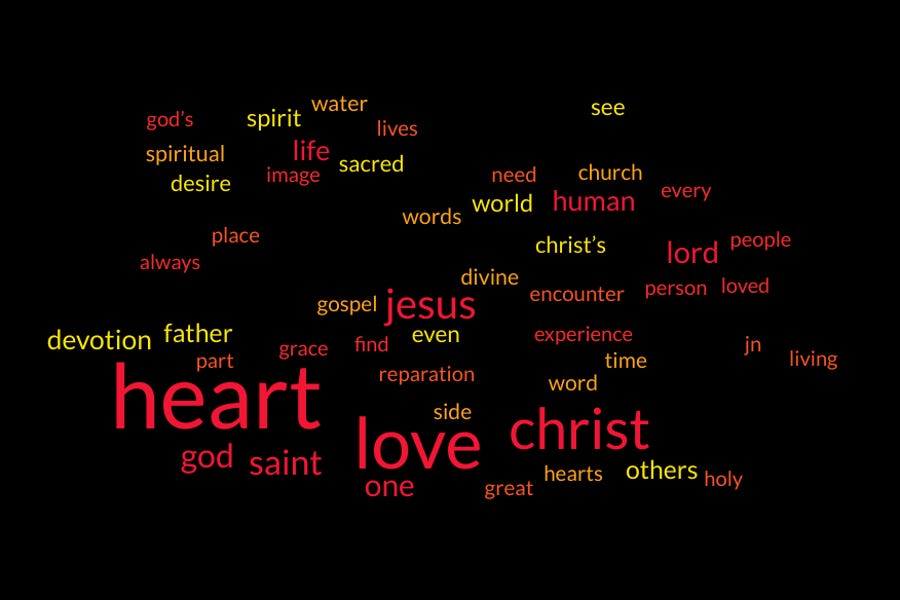
What does it say?
The encyclical is divided into five chapters.
1) The importance of the heart: This chapter reflects on what we mean when we speak of “the heart,” with reference to Ancient Greek civilization and the Bible. The pope argues that in a time of social upheaval, “we need to start speaking once more about the heart.”
He writes: “In this age of artificial intelligence, we cannot forget that poetry and love are necessary to save our humanity.”
2) Actions and words of love: In the short second chapter, Francis reflects on the “concrete actions” and words of Christ that revealed the depth of his love for human beings.
3) This is the heart that has loved so greatly: The pope then considers what devotion to the heart of Christ consists of. It is not, he points out, “the veneration of a single organ apart from the Person of Jesus.” Instead, “what we contemplate and adore is the whole Jesus Christ.”
He urges Catholics not to get hung up on particular images of Christ’s heart, some of which may “strike us as tasteless and not particularly conducive to affection or prayer,” but to allow them to lead us to an encounter with Jesus.
The pope makes the case for the enduring relevance of devotion to the Sacred Heart.
“The expressive and symbolic image of Christ’s heart is not the only means granted us by the Holy Spirit for encountering the love of Christ, yet it is … an especially privileged one,” he writes.
But the devotion needs to be continually nurtured, he says, through practices such as receiving Communion on the first Friday of each month and spending an hour in Eucharistic adoration each Thursday.
Francis suggests that just as devotion to the Sacred Heart challenged Jansenism in the 17th century, so today it responds to “a powerful wave of secularization that seeks to build a world free of God.”
“I must warn that within the Church too, a baneful Jansenist dualism has re-emerged in new forms,” he writes. “This has gained renewed strength in recent decades, but it is a recrudescence of that Gnosticism which proved so great a spiritual threat in the early centuries of Christianity because it refused to acknowledge the reality of ‘the salvation of the flesh.’ For this reason, I turn my gaze to the heart of Christ and I invite all of us to renew our devotion to it.”
4) A love that gives itself as drink: The fourth chapter considers the deep historical roots of devotion to Christ’s heart, beginning with the Hebrew Bible, the New Testament, and the early Church Fathers.
The pope charts the devotion’s spread in the Middle Ages, highlighting the mystical experiences of women such as Julian of Norwich. He devotes a section to the “important contribution” of the 16th-century writer-saint Francis de Sales.
He then arrives at the revelations received by St. Margaret Mary Alacoque, and championed by her Jesuit confessor St. Claude La Colombière. From there, he moves to the influential 19th-century French saints Charles de Foucauld and Thérèse of Lisieux.
The first Jesuit pope notes the singular role played by the Society of Jesus in the spread of the Sacred Heart devotion.
The long history of the devotion, and its centrality to the lives of so many saints, shows it is not “an admirable relic from the past, a fine spirituality suited to other times,” he says.
5) Love for love: In the fifth chapter, Francis considers the human response to the encounter with Christ’s loving heart. He reflects on how Christians over the centuries have been moved to address the needs and sufferings of others.
Here, he considers the meaning of reparation to the Sacred Heart, a notable feature of the devotion associated with St. Margaret Mary Alacoque. The saint revealed that Jesus had told her to “make reparation for the ingratitude of men.”
The pope underlines the “social significance” of reparation, emphasizing the need for “a true spirit of reparation,” which goes beyond simply accomplishing “a congeries of external works.”
He ends the chapter by reflecting on the missionary dimension of devotion to Christ’s heart.
Pope Francis then offers a brief conclusion in which he makes the case for the devotion’s continued relevance.
He writes: “Christ’s love can give a heart to our world and revive love wherever we think that the ability to love has been definitively lost.”
He says the Church itself needs this love, “lest the love of Christ be replaced with outdated structures and concerns, excessive attachment to our own ideas and opinions, and fanaticism in any number of forms.”
What about the more than 200 footnotes? Alongside the expected references to the works of popes and saints, an eclectic range of writers are cited, including the papal favorites Dante Alighieri and Fyodor Dostoevsky, and the controversial German philosopher Martin Heidegger.
Comments 33
Services Marketplace – Listings, Bookings & Reviews
